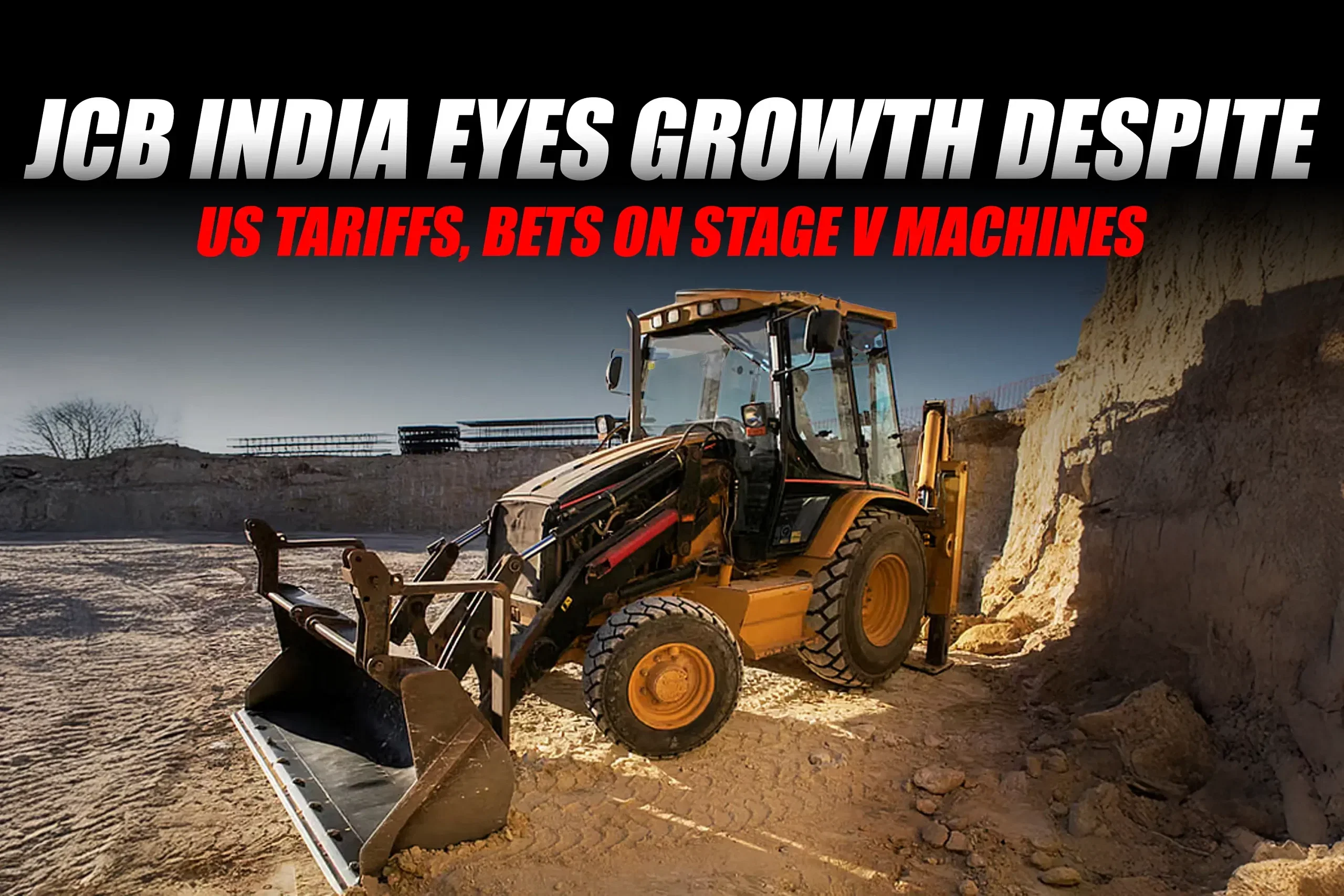JCB India is pushing ahead with its global plans. This comes even as fresh US tariffs put pressure on exports of construction equipment. The company is leaning on new technology, trade pacts and emerging markets to offset the impact.
“The US is a big market. Last year, we exported almost 10,000 machines from India as JCB, and the industry as a whole shipped 12,000–13,000 units. The tariff will have an impact, but I believe these are short-term challenges,” said Deepak Shetty, CEO and Managing Director, JCB India.
The US has slapped an extra 25% tariff on Indian exports. This covers the automotive sector, including construction equipment categories. The hit will vary by product-specific HSN codes. Shetty warns against “reacting in a negative way”. JCB’s reach across 135 countries, with factories in India, the UK, Brazil and the US, allows it to re-route machines to other markets.
Free Trade Boost and New Markets
JCB is counting on the UK-India free trade agreement to sharpen its edge in Europe. “The market is there; our machines have a very good listing. The FTA will make us more competitive on price,” Shetty said.
Beyond Europe, the company is building momentum in South Asia and Africa. Sales in Nepal are set to rise from 250 units last year to as many as 700 in 2025. Sri Lanka is expected to see 500–600 units. In Africa, JCB has tripled sales in three years, with gains in Ethiopia, Kenya, Tanzania, Uganda and Angola.
India Market Feels the Strain

India’s construction equipment sector grew just 3% last year after a strong run of over 20% growth. Election-related project delays took a toll. This year’s numbers were hit further by the January shift to JCB CEV V emission norms. Many buyers advanced purchases, leading to a sales slowdown later.
Industry sales in July fell 33% year-on-year to 3,509 units. That was the steepest drop among all commercial vehicle categories tracked by FADA. JCB India’s own retail sales slipped from 2,293 units in July 2024 to 1,731 in July 2025. Yet its market share climbed to nearly 50%.
Shetty expects the market to remain “flat, plus or minus 3%” this year. A normal monsoon, rural demand and renewed infrastructure spending could lift the second half. “Last year was our best in 45 years. This year could be our second-best,” he said.
Stage V Machines Lead the Push
While rivals focused on clearing old stock, JCB launched its JCB India Stage V range. These machines promise 14–15% better fuel efficiency. Maintenance costs are lower. The total cost of ownership is below Stage IV models. More than 20,000 Stage V units have been sold in the first six months of 2025.
The company believes the long-term picture is strong. Shetty projects a 10–12% annual growth rate for the construction equipment industry over the next five years. By 2030, India could overtake China to become the world’s second-largest market, selling around 250,000 machines annually.
“Government projects from the National Infrastructure Pipeline to housing schemes will drive demand. Before every house is built, you have to flatten the ground and dig the foundation. That’s construction equipment,” Shetty said.
Stay tuned with 91Infra for the latest news, updates, and insights into the construction equipment industry. As the fastest-growing digital platform, we are committed to providing you with accurate information, expert reviews, and in-depth analysis of construction equipment from various brands. Whether you’re looking for price comparisons, variant details, or industry trends, 91Infra is your go-to source for everything related to construction machinery in India.
Latest Construction Equipments News
91Infra is a rapidly growing digital platform that provides the latest updates and detailed information about the infrastructure and construction equipment industry.










